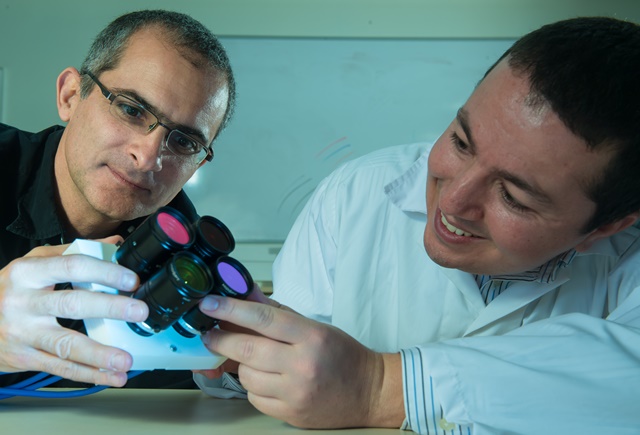
New software developed by BGU researchers enables standard cameras to capture hyperspectral images and video -- a faster and more cost-efficient approach than what is commercially available today.
The game-changing software captures the spectral signature of every pixel in a single image – a significant improvement over the current spectrometric technology, which can only measure one point or line at a time. It can also create hyperspectral videos, instantly collecting hyperspectral information on non-static objects.
The software can be installed in existing cameras, including smartphone cameras, turning them into extremely low-cost and fast-working hyperspectral cameras.
Existing hyperspectral cameras are used to detect specific materials and identify the qualities of those materials, such as an analysis of the earth's composition, its vegetation, or the existence of oil or impurities in water. Yet these cameras are expensive and cumbersome to use - photographing a frame can take up to a minute.
“Current hyperspectral technology seeks to capture the entire electromagnetic spectrum," says Prof. Ohad Ben-Shahar (pictured above left), founding director of the Interdisciplinary Computational Vision Laboratory and chair of BGU's Department of Computer Science. “Our technology, however, shows that wavelengths in nature cover only a small subset of all possible spectra (since the spectrum of the sun is relatively stable and the number of substances in the world is finite). Using computational research, we were able to reconstruct hyperspectral imaging from the regular RGB color model used in regular cameras. In most cases, this provides extremely good reconstruction."
The global hyperspectral imaging systems market is projected to reach $12.71 billion by 2021, according to a Markets and Markets Report published in January 2017.
“Our researchers are world leaders in the fields of computational vision and electro-optical engineering, and a great part of this research can be utilized for commercial purposes," says Mr. Netta Cohen, CEO of BGN Technologies, the technology transfer company of BGU.
BGN Technologies has patented the invention and is working with the researchers to commercialize it.
“This particular invention will help make hyperspectral technology more accessible," adds Boaz Arad (pictured above right), a PhD student in the Department of Computer Science and the co-creator of the project, “expanding its use to new fields such as improved color imagery and light sensitivity in regular photography."